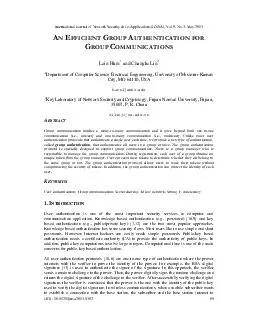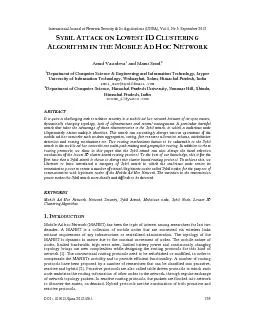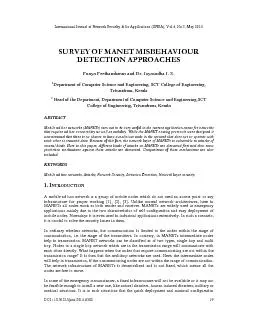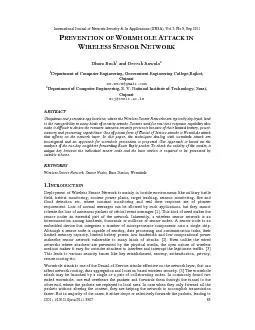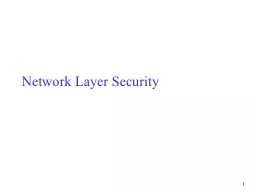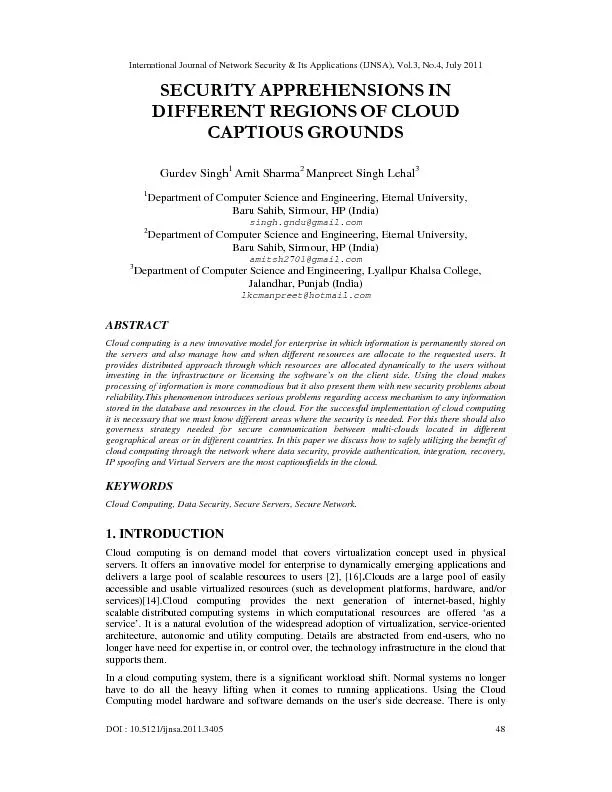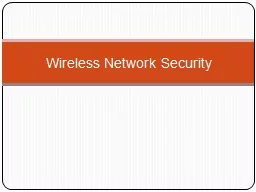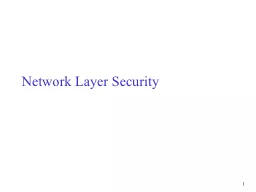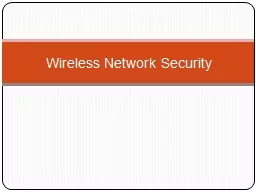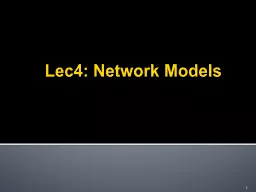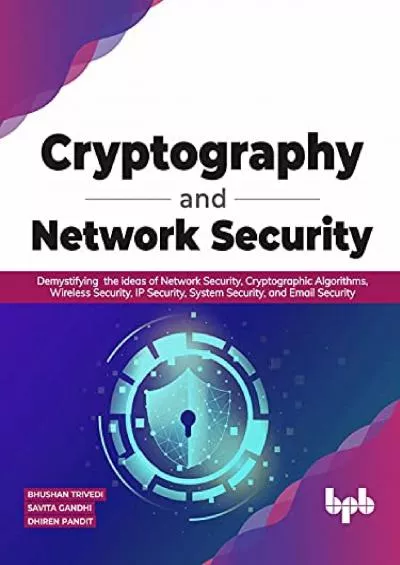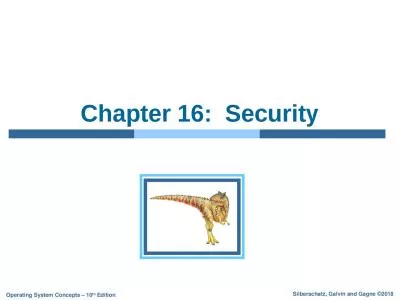PDF-International Journal of Network Security Its Applications IJNSA Vol
Author : tawny-fly | Published Date : 2015-03-18
5 No3 May 2013 DOI 105121ijnsa20135302 09 Lein Harn and Changlu Lin 2 Department of Computer Science Electrical E ngineering University of MissouriKansas City MO
Presentation Embed Code
Download Presentation
Download Presentation The PPT/PDF document "International Journal of Network Securit..." is the property of its rightful owner. Permission is granted to download and print the materials on this website for personal, non-commercial use only, and to display it on your personal computer provided you do not modify the materials and that you retain all copyright notices contained in the materials. By downloading content from our website, you accept the terms of this agreement.
International Journal of Network Security Its Applications IJNSA Vol: Transcript
Download Rules Of Document
"International Journal of Network Security Its Applications IJNSA Vol"The content belongs to its owner. You may download and print it for personal use, without modification, and keep all copyright notices. By downloading, you agree to these terms.
Related Documents

